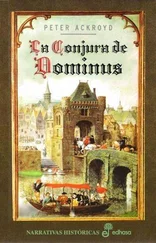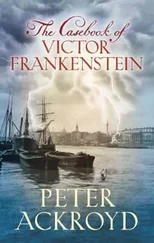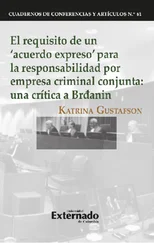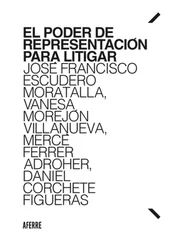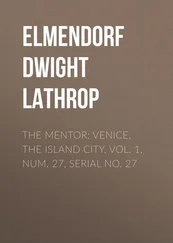1348: Plague in the city.
1380: The long war between Venice and Genoa, which had continued intermittently for a century, ends with a Venetian victory.
FOURTEENTH TO FIFTEENTH CENTURIES
Venice is at the height of its military and naval power.
FIFTEENTH CENTURY
1421: The construction of the Ca d’Oro begins.
1422: The old palace of the doge is replaced by a Renaissance palace in Saint Mark’s Square.
1462: War breaks out between the Venetian and Turkish empires; it ends in 1479 when the Venetians sue for peace. This signals the beginning of the end of Venetian power in the East. Gradually Venice ceases to dominate trade in the area.
1495: The publisher Aldus Manutius establishes a workshop in Venice for the production of texts in Greek, Latin and Hebrew.
SIXTEENTH CENTURY
1516: The Jewish ghetto is established in Canareggio.
1519: The birth of Tintoretto.
1527: After the sack of Rome by barbarian invaders, Venice offers a haven to countless Roman artists and intellectuals.
1527: Jacopo Sansovino, a refugee from Rome, is appointed public architect. He designs the Mint, the Library, the loggia of the campanile, and part of the Rialto market. He also transforms Saint Mark’s Square into a classical piazza.
1565: The first European theatre, built specifically for the production of plays, is constructed in Venice.
1570: Venice loses Cyprus to the Turks.
1585: Beginning of the construction of the Rialto bridge.
SEVENTEENTH CENTURY
1618: The failure of the “Spanish Plot” to destroy many important political buildings in the city.
1637: The world’s first public opera house is created in Venice.
1669: Venice loses Crete to the Turks.
1678: Vivaldi is born.
1696: Tiepolo is born.
EIGHTEENTH CENTURY
Venice becomes the city of art and pleasure.
1725: Casanova is born.
1774: The greatest Venetian gambling house is closed by public order.
1797: Venice falls to Napoleon, who hands the city over to the Austrians. The doge is deposed and the Venetian republic ceases to exist.
NINETEENTH CENTURY
1805: Napoleon defeats the Austrians and reclaims the city.
1814: The Austrians reclaim Venice.
1848: The Venetians oust the Austrians from the city and re-establish the republic of Venice.
1849: The Austrians reoccupy the city and the republic falls.
1854: The Accademia Bridge is constructed.
1866: The Austrians withdraw from Venice and the city becomes part of the newly established kingdom of Italy.
End: The Lido becomes a popular beach resort.
1895: The first international exhibition is organised. It soon becomes known as the “Biennale.”
TWENTIETH CENTURY
1902: The campanile of Saint Mark’s Square falls.
1917: Venice, as part of the Italian alliance with Britain and Russia in the
First World War, is once again menaced by Austrian forces.
1943: German forces take over the city.
1966: The year of the great flood.
1996: Venice’s most famous opera house, La Fenice, burns down.
Appadurai, Arjun: The Social Life of Things (Cambridge, 1986).
Arslan, Edoardo: Gothic Architecture in Venice (London, 1972).
Baldauf-Berdes, Jane L.: Women Musicians of Venice (Oxford, 1993).
Barbaro, Paolo: Venice Revealed (London, 2002).
Baron, Hans: Humanistic and Political Literature in Florence and Venice (Cambridge, 1955).
——— The Crisis of the Early Italian Renaissance (Princeton, 1966).
Bassnett, Susan (trans.): The Flame of Gabriele D’Annunzio (London, 1991).
Berendt, John: The City of Falling Angels (London, 2005).
Berenson, Bernard: The Venetian Painters of the Renaissance (New York, 1901).
——— Lorenzo Lotto (London, 1956).
Berkeley, G.F.H.: Italy in the Making , 2 volumes (Cambridge, 1940).
Bolt, Rodney: Lorenzo Da Ponte (London, 2006).
Bouwsma, William J.: Venice and the Defence of Republican Liberty (London, 1968).
Braudel, Fernand: Civilisation and Capitalism , 3 volumes (London, 1984).
Brion, Marcel: Venice (London, 1962).
Brown, Horatio F.: Venice, An Historical Sketch (London, 1893).
——— Studies in the History of Venice (London, 1907).
——— Life in the Lagoons (London, 1909).
Brown, Patricia Fortini: Venetian Narrative Painting in the Age of Carpaccio (New Haven, 1988).
——— Venice and Antiquity (New Haven, 1996).
Bull, George: Venice (London, 1980).
Burckhardt, Jacob: The Civilisation of the Renaissance in Italy (Oxford, 1945).
Burke, Peter: Venice and Amsterdam (London, 1974).
Cairns, Christopher: Domenico Bollani (Nieuwkoop, 1976).
——— Pietro Aretino and the Republic of Venice (Florence, 1985).
Calimani, Riccardo: The Ghetto of Venice (New York, 1987).
——— Storie di Marrani a Venezia (Milan, 1991).
Chambers, D.S.: The Imperial Age of Venice (London, 1970).
Chambers, David and Pullan, Brian (eds): Venice, A Documentary History (Oxford, 1992).
Chojnacka, Monica: Working Women of Early Modern Venice (Baltimore, 2001).
Chojnacki, Stanley: Women and Men in Renaissance Venice (Baltimore, 2000).
Cole, Bruce: The Renaissance Artist At Work (London, 1983).
Concina, Ennio: A History of Venetian Architecture (Cambridge, 1998).
Crawford, F. Marion: Gleanings from Venetian History , 2 volumes (London, 1905).
Crouzet-Pavan, Elisabeth: Venice Triumphant (Baltimore, 2002).
Da Mosto, Francesco: Francesco’s Venice (London, 2004).
Datta, Satya: Women and Men in Early Modern Venice (Aldershot, 2003).
Davia, James C.: A Venetian Family and Its Fortune (Philadelphia, 1975).
Davis, Robert C.: The War of the Fists (New York, 1994).
Davis, Robert C. and Marvin, Garry M.: Venice, The Tourist Maze (Berkeley, 2004).
Demus, Otto: Studies in Byzantium, Venice and the West , 2 volumes (London, 1998).
Dotson, John E. (ed.): Merchant Culture in Fourteenth-Century Venice (New York, 1994).
Douglas, Mary and Isherwood, Baron: The World of Goods (London, 1979).
Eisler, Benita: Byron (New York, 1999).
Eisler, Colin: The Genius of Jacopo Bellini (London, 1988).
Fehl, Philipp P.: Decorum and Wit: The Poetry of Venetian Painting (Vienna, 1992).
Fei, Alberto Toso: Venetian Legends and Ghost Stories (Treviso, 2004).
Feldman, Martha: City Culture and the Madrigal at Venice (Berkeley, 1995).
Fenlon, Iain (ed.): The Renaissance (London, 1989).
Ferraro, Joanne M.: Family and Public Life in Brescia (Cambridge, 1993).
——— Marriage Wars in Late Renaissance Venice (Oxford, 2001).
Finlay, Robert: Politics in Renaissance Venice (London, 1980).
Flagg, Edmund: Venice, City of the Sea , 2 volumes (London, 1853).
Fletcher, Caroline and Da Mosto, Jane: The Science of Saving Venice (Turin, 2004).
Geanakoplos, Deno John: Greek Scholars in Venice (Cambridge, 1962).
Georgopoulou, Maria: Venice’s Mediterranean Colonies (Cambridge, 2001).
Gilbert, Felix: The Pope, His Banker, and Venice (London, 1980).
Gleason, Elizabeth G.: Gasparo Contarini (Berkeley, 1993).
Glixon, Jonathan: Honouring God and the City (Oxford, 2003).
Читать дальше




